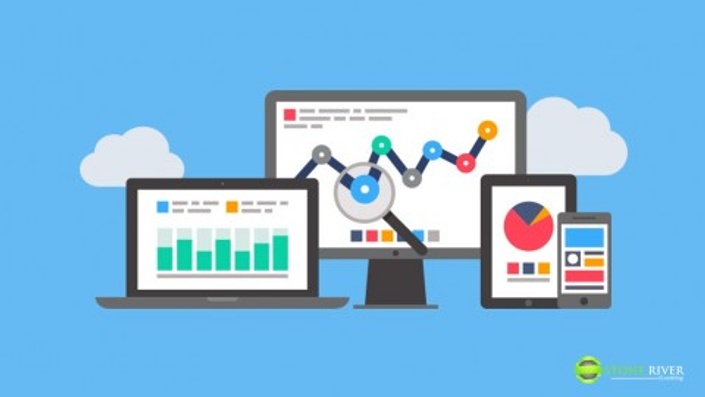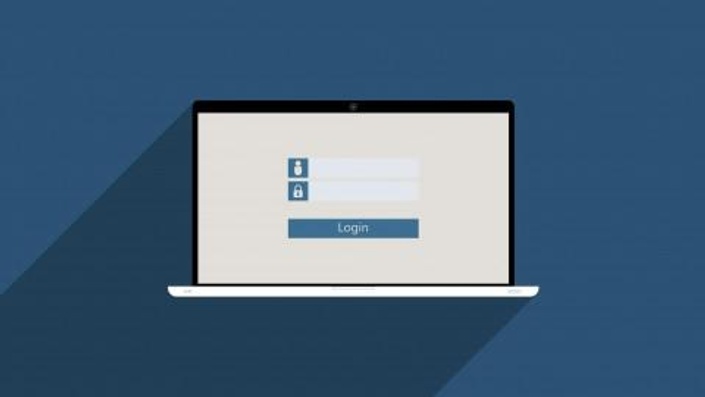Web Development
It’s about time you bring something new to the table. You know you should upgrade your skills but you never seem to have the time to do anything else besides work.
The thought of having to be in class at a certain time and place is absolutely daunting.
What if you had the possibility to learn anything, anytime, anywhere?
Through the Stone River Unlimited Course Access Subscription now you can! It’s that good and it’s true.
You’ll get full access to our entire catalog of 800+ (and counting) technology, programming, and digital design courses. Get a step ahead of the competition, land that dream job, up your skill level and make more money; all for a small monthly investment.
No matter if you need coding, design or development in your career or as a hobby, this subscription is exactly what you need.
1,200,000 students have already enrolled in our courses. Every one of them has gained better job prospects, a chance to improve their salary and lifestyle, and most importantly a belief that they can do it, and do it well.
That’s just the tip of the iceberg. Here’s why this unlimited subscription is the best value for money around:
- Total access to 800+ courses
- 24/7 access
- Free VIP Perks access
- Learn from any computer or mobile device
- Learn in any location
- Learn for as long as you need it
- Free access to certification exams
- 30 day money back guarantee
You will get a free certificate for each course you complete.
Your Unlimited Course Access Subscription is just that; unlimited. That means any new, hot topics we release (like Big Data, mobile development or JavaScript) will be automatically added to your account. So you can future-proof your skills without any extra cost, and remain at the cutting edge of your chosen field.
Your subscription comes with a 30-day, no-risk, money back guarantee. If you’re not happy with what you’ve learned after the first month, you can cancel your subscription and receive a full refund, no questions asked. But we’re willing to bet you’ll stick with us.
Forget about endless hours of Googling and reading through blog posts or watching unorganized tutorials.
Forget about handing out your personal details left right and center so these sites can sell you stuff instead of teaching you what you need to know.
Instead, picture an expert instructor ready and waiting to teach you up to date, relevant, and practical skills - without the sales pitch. Start getting the skills you want, today, while going at your own pace. Use these skills to your advantage right now.
That's what you get with the Stone River eLearning Unlimited Course Access Subscription. Save time, save money, become a leader and win that dream career.
Don't put your education off any longer. Enroll risk-free today!
Take your skills from basic to expert with four comprehensive courses.
“From prototype through global deployment, Angular delivers the productivity and scalable infrastructure that supports Google's largest applications.” That's how Angular is described by the people that built it, but it's only scratching the surface of what this web application framework can do.
We've put together this Angular online course bundle so that you can get ahead of curve. Following a logical progression that covers the basics right up to the advanced features and intricacies of the framework, this bundle has been designed to give you a competitive edge in the developer job market.
Throughout each of the four courses in this bundle, you'll learn all you need to know about Angular and Angular JS, creating real life working projects as you go. Each course covers a cornerstone of the Angular world; Angular JS for Beginners, Angular JS for ASP.NET MVC developers, Angular 2 Crash Course with TypeScript, and Starting with Angular 5.
We've ensured each course is 100% accurate with the latest updates and releases from Angular included. And when more updates emerge in the future, we'll include them too – so no matter how many times you return to your bundle, there will always be something new to learn.
Who should buy this bundle?
Do you want to create web apps for a living? Then this bundle is your dream come true. If you're already working as a professional in that area, this bundle will still teach you plenty of tips and tricks that can help to take that next step on the career ladder. With content to suit all levels from beginner to guru, anyone with an interest in Angular will get immense value from this bundle.
What's covered in this bundle?
• Angular 2
• Coding with TypeScript
• Angular 5 (updated regularly)
• Dependency injection
• Two way data binding
• Angular JS
• Angular JS for ASP.NET MVC Developers
• MVC architecture
Master Flask with our four comprehensive courses.
Flask is a microframework created specifically for Python. And since Python is fast becoming one of the most popular programming languages around, the future of Flask is looking not just bright, but downright dazzling. Our Flask online course bundle will get you up to speed on this fun and easy framework.
We've put together this Flask course bundle to take you through absolutely everything you need to know and learn about this microframework. Designed to take you from the basic concepts right up to the most advanced ones, this bundle will make you a Flask expert by the time you've done.
There are four courses to work through progressing from beginner/intermediate to advanced; Python Web Development with Flask, Advanced Scalable Python Web Development Using Flask, Professional RESTful API Design using Flask, and Essential Docker for Python Flask Development. You'll not only learn core Flask fundamentals, you'll also gain an in-depth insight into how it can be applied with various other tools, least of all Python.
By the time you've completed this bundle, you'll be ready and waiting to create stunning, scalable, expertly built web applications using Python, Flask and a variety of other tools. From there, it's only a matter of time before you become a professional Flask developer.
Who should buy this bundle?
If you've learned to code using Python, Flask is definitely something you'll want to delve into. It will diversify your skills, give you a little extra edge, look GREAT on your resume and allow you to do so much more with your Python projects... like build big, beautiful web applications. But having said that, Flask is also useful for any web app developer out there – especially those who have yet to see what Python has to offer.
What's covered in this bundle?
• Python web development
• Flask fundamentals
• RESTful API design
• Python Shell
• Scalable Python web development
• JSON Schema library
• Using Docker for Python Flask
• Basic Docker concepts
Become a Professional JavaScript Programmer with Stone River eLearning's online course bundle designed to take you from a Javascript beginner to a pro.
Javascript has seen an incredible rise in popularity over the last several years thanks to the development of a huge number of libraries that allow you to do almost anything with it.
It's never been more important than right now to learn Javascript in depth. It will allow you to get great development jobs or move up in your current job, and Javascript development (especially for web app development) is a key skill for today's tech entrepreneurs.
This is a living, breathing course bundle. We will be updating content and adding new content for quite a while to come. Purchase this bundle today and continue to get new cutting edge Javascript content as we roll it out.
Are you a web developer, but are having a hard time keeping up with all the latest development tools coming out? Are you new to web development and want to dive straight into cutting edge, modern web development tools? If so, then this course bundle is for you.
Stay Ahead of the Curve
If you’re a web developer you know your world is changing fast. We developed this course bundle with you in mind. We’ve hand selected only the hottest and most functional tools used in web development today so you can stay comfortably ahead of your peers for years to come.
What You'll Learn
The topics in this course bundle include:
- Angular 2
- Node.js
- MongoDB
- Ruby on Rails
- Python Web Development with Flask and Django
- Bootstrap 4
- Sass for CSS
- Dart Web App Development
- MySQLi
- Docker Containerization
- And more
Make More Money
We all want to make more money, and this course bundle will greatly expand your development skills so you can make more money. As a web developer, you need to change with the times or you’ll be left in the dust.
What Do I Need to Know to Take This Course?
A familiarity with general programming and web development techniques is recommended to get the most out of this course bundle.
Enroll Today
You know you need to upgrade your web development skills to stay relevant. Don’t wait. Enroll in the Become a Modern Web Developer course bundle today.

Python programming is one of the most demanded skill sets in today's job market, and for good reason. Python allows you to do just about anything you can think of; web development, data analytics, game development - even controlling robots!
This Python Programming Professional Bundle is designed to get you up to speed with all the major Python skills you need right now. Learn on your own time and at your own pace, just be sure to learn this stuff.
What Can You Learn?
Python Programming for Beginners: If your knowledge of Python and programming is limited – or even non-existent – then this course is the perfect starting point for you. You'll be guided through the installation process and the various features and functions of Python, and then you'll put your knew found knowledge to practical use by solving 'real life' programming problems. Ideal for both programming beginners or experienced programmers new to Python.
Python Web Programming: Python is one of the most concise and easily understood programming languages out there, and one of its most popular applications is the web. This is the definitive python web programming course, designed for programmers, web developers, app creators, and anyone who wants to become 'code literate'. Not only will you acquire an in-depth understanding of the programming language and its application for the web, you'll get hands-on experience building programs too.
Python Game Development: Create a Flappy Bird Clone: As well as web development, data visualisation and analysis, and a host of other applications, Python is a programming language perfectly suited to game development. With this course, you'll learn the easy way. Rather than working through hours of lectures and exercises, you'll literally create a game as you go. Who said picking up new skills can't be fun?
Data Visualisation with Python and Matplotlib: Companies are finally waking up to the benefits that big data and data analysis can have for their business. However, the majority of them lack the know-how to turn this data into something easily understood, readable, and presentable. That's where data visualisation comes in. Using Python in conjunction with Matplotlib, you can create just about any 2D or 3D graphs, bar charts, scatter plots, and more.
Data Analysis with Python and Pandas: Data analysis is one of the most sought-after skills from the biggest companies in the world, and guesses what? Python can be used to do it. Working with Pandas, you'll learn how to import and export data in a wide variety of forms, and organise and manipulate it into whatever way you need. Combined with our Data Visualisation with Python course below, it's all your need to become a genuine data guru.
Learn Python Django from Scratch: If you already have some experience with Python, web development or both, then this is the perfect course to take your expertise to the next level. Working in conjunction with Django you'll create a website from scratch featuring map integration, e-commerce functionality and a host of other complex features. Master this skillset, and you'll be all set to take the web by storm with database-driven yet simple and beautiful sites.
Go Where the Money is
Companies such as Google, Yahoo!, Disney, Nokia, and IBM all use Python. In fact, among programming languages, Python had the largest year-on-year job demand growth — at 19% — as of March 2013. This growth has been increasing ever since. Notably, the overall hiring demand for IT professionals dipped year over year by 5% as of January 2014, except for Python programmers which increased by 8.7%. In New York, Python developers ranked #8 of the most in-demand tech workers, making an average of $106k/year. On the other side of the Atlantic, Python programmers also enjoy a strongly rising demand for their skills .

If you’re looking at this page, you’ve probably had ‘learn how to code’ at the top of your to-do list forever. Coding is the future, and the technology industry is crying out for good programmers fluent in a range of languages. With that in mind, we’ve created this bundle for people just like you. Whether you’re a complete newcomer to programming or you already have some experience but want to expand your knowledge, this bundle will set you up for a career as a professional programmer.
With access for life, you can learn at your own pace and complete lessons according to your own schedule. Whether you take your time or power through at breakneck speed, you can rest assured you’re learning everything you need to know.
This bundle includes the following courses:
- HMTL5 and CSS3 Fundamentals: HTML5 is the latest version of the code that makes the web tick, and CSS3 is the next level of web design to go with it. Put them together and you have a recipe for future-proofed, flawless and perfectly functioning websites. This course will teach you both by diving right in at the practical end, and have your creating beautiful websites in no time.
- Python Programming for Beginners: Python is one of the most in-demand skills that top employers like Microsoft, Google and many more look for; and that’s a trend that only set to continue for the next few years at least. Python is a simple, versatile and highly readable code used for everything from building websites to controlling robots! Whether you’re new to Python or new to programming in general, this course will get you up to speed.
- Swift Programming for Beginners: Swift is one of the hottest new languages out there right now, and essential if you want to become a fully fledged iOS app developer. If you’re looking for a crash course to get a handle on Apple’s primary coding language, look no further. This course will turn you into an expert Swift engineer, building your knowledge from scratch with plenty of practical exercises.
- Google Go Programming: It should come as no surprise that Google has its own programming language. And since Google is one of the biggest names in the technology world, it should come as no surprise that learning Go is a sure-fire way to boost your employment credentials, both with this computing behemoth and just about everyone else too. This course will tell you everything you need to know.
- Fundamentals for Java Programming: Every professional programmer worth their salt knows Java inside and out. It’s the most common programming language in the world, and it sets the tone for all other code. In short, you won’t get anywhere without it, so it’s worthwhile learning how to do it right; and that’s exactly what this course does – from the ground up.
- Perl Programming for Beginners: It’s easy to get a little lost in the sea of programming languages out there. Luckily, Perl is a great starting off point because it’s simple to use, easy to learn, and very versatile. If you don’t know where to take the first step to becoming a professional programmer, there are worse places to start. This course will help you grasp the fundamentals and get started in the programming world.
- C++ Programming Fundamentals: C++ is the Grandfather of many of the tech world’s programming languages – Java being just one. Learning C++ gives you a head start on learning any other language, and a leg up as far as your employability is concerned. By taking this course, you’ll lay down a solid coding foundation and gain an excellent platform for improving your skills.
- Python Web Programming: After you’ve completed our Python Programming for Beginners course, Python Web Programming will give you an extra edge and a new set of skills with a language that’s not only easy to learn, but a real money maker too. You’ll learn the art and the science behind web programming, graduating with all the tools necessary to build vibrant and sustainable web based programs.
- Ruby On Rails: Ruby on Rails can sound intimidating for anyone who doesn’t know it, but in reality it’s not only extremely useful, but completely logical too. This course will take from zero to Rails developer, showing you how to create fully interactive Rails applications from the very beginning. You’ll learn how to connect databases, accept user input, and complete a comprehensive project so you’re ready to use RoR in the real world straight away.
- Fundamentals of JavaScript: JavaScript is fast becoming one of the most widely used programming languages in the world, thanks in part to its ever growing catalog of libraries that allow you to do just about anything you want. Before you get into learning the JS libraries you'll need to know the basics. This is where you should start.
- AngularJS: AngularJS is one of the above-mentioned JS libraries, and is one of the reasons for JavaScript's sudden rise to popularity. Learn Angular programming here by first learning the basics, then moving on to Angular projects that you'll be proud to add to your portfolio.
You'll also learn C# via Unity 3D game development, and the new Dart programming language from Google.

We call this Become a Professional Web Developer not because we think we're great, but because this is hands down the most in depth course on web development in town. The design and structure of this course follows elite college curriculum. You will begin by learning the basics of each programming language and technology web developers use, and you will be creating real life projects with every new skill you learn so you're getting the entire finished puzzle instead of just pieces that you have to put together yourself.
More Than Just the Basics... Much More
Most courses on web development walk you through the skills beginners need, but then require you to learn the skills that make you an employable web developer. This course is different. After you have learned the basics and built real projects for your portfolio, you can move on to hours and hours of continued training at the intermediate and advanced levels for each web development skill you've learned.
Don't stop when you're just starting to get good at this, keep learning and enhancing your web development portfolio. New content will be added to this course frequently, so even if you complete the entire course, the next time you log in you'll have more skills to learn.
Who Should Take This Course
You should take this course if web development as a profession sounds good to you, or if you're looking to brush up on your web development skills in any area. There is so much content in this course that even experienced developers will benefit from it.
What is Covered in This Course
- HTML/HTML5
- CSS/CSS3
- JavaScript
- Ajax
- jQuery
- JSON
- PHP
- MySQL
- CodeIgniter
- Social Medial Login Integration
- Chrome Developer Tools
Source codes are included for the entire course so you can learn by running the actual code and modifying it as needed.

Do you want to be a PHP developer or web developer? Do you need to brush up on your PHP skills? Then you're in the right place!
This PHP development online course bundle from Stone River eLearning is perfect for complete beginners and experienced PHP developers alike. The PHP Guru bundle takes you from absolute beginner to a professional PHP developer, or from a decent PHP developer programmer to a great one.
Included in this bundle are lectures that teach you the very basics of PHP programming, how to create an authorization system for a website besides walking you through every step in the process of building an R/L system using PHP object oriented programming... and more!
What's Included?
- Over 285 lectures and over 80 hours of content!
- Lifetime access to all course materials
- Gain valuable job skills to become a professional PHP developer
- Create an authorization system with Laravel
- Master PHP Object Oriented Programming
- Learn how to integate a database using the MySQLi extension for PHP
- Develop with the PayPal IPN system
- Build an MVC framework
- To create an image upload website from scratch using PHP
- Master PHP data objects
- Build a content management system from scratch
- Create a chat application usable for websites
- Learn how to use PHP OOP with a SQL database

Often when we think of WordPress, we think of blogging—but WordPress can do so much more! In this comprehensive Wordpress training course bundle, you'll discover everything you need to know to get your WordPress site online, including how to effortlessly register a domain name and set up web hosting, install WordPress, and begin using it to publish your work on the web!
If your skills are beyond Wordpress content development, try creating your own themes from scratch. In Scratch-Building Wordpress Themes you will learn the design side of Wordpress, and you will be able to create and sell your own Wordpress themes.
In this course bundle we'll also cover the art and science of Wordpress Plugin Development from scratch. By developing 8 simple plugins we will cover everything you need to know to be able to create awesome plugins that will run in most of the web.
What's Included?
- Over 200 lectures and 30 hours of content!
- Develop a solid understanding of WordPress
- Get an in-depth and complete look at theme building, which you can directly apply to your projects — it's literally a freelance startup kit!
- Create your own Wordpress Plugins
- Build a website with no experience
- Save Time By Automatic Your Social Media
- Drive More Traffic to Your Website or Blog
- Lifetime access to all course materials

30 day money back guarantee!
Available on all mobile devices
Certificate of Completion
We've all logged into a website using one of our social media accounts. It saves the user from having to remember yet another user name and password, and this type of login system is in high demand.
This course teaches you how to integrate login systems for any website using any of the big three social media logins on the market today:
Web Developers
If you're a web developer, or want to be a web developer, and you don't know how to implement social media logins you are behind the curve. This is a must-have skill for any web developer today.
